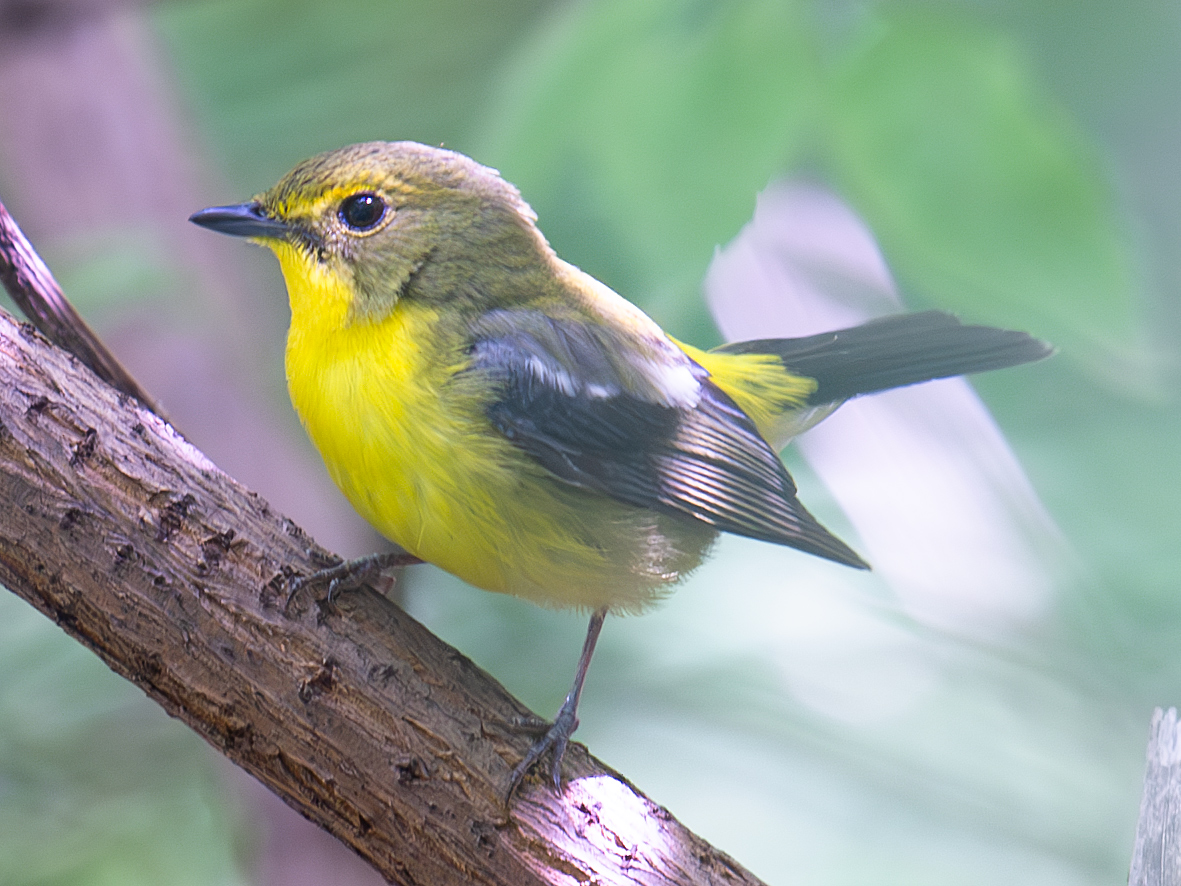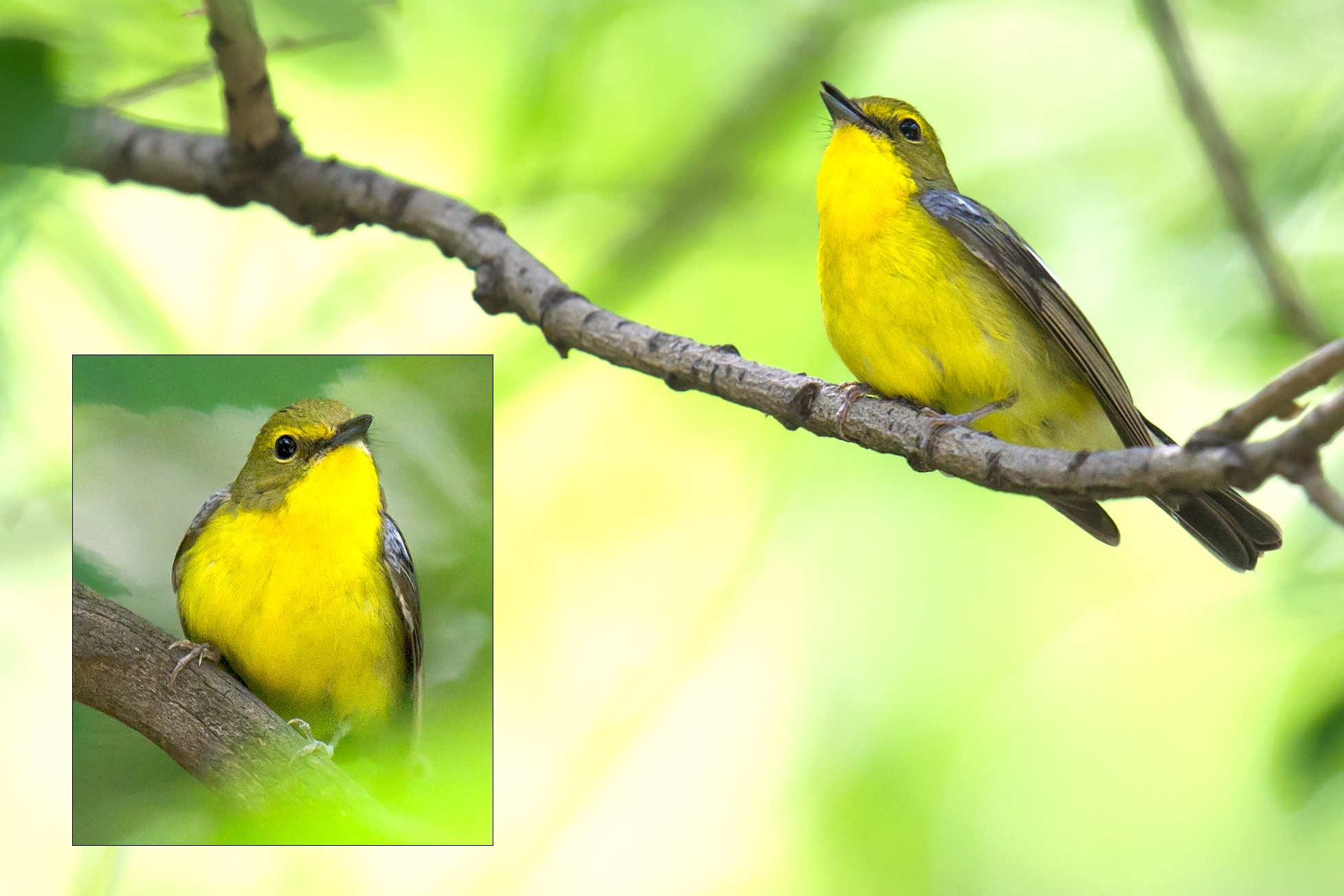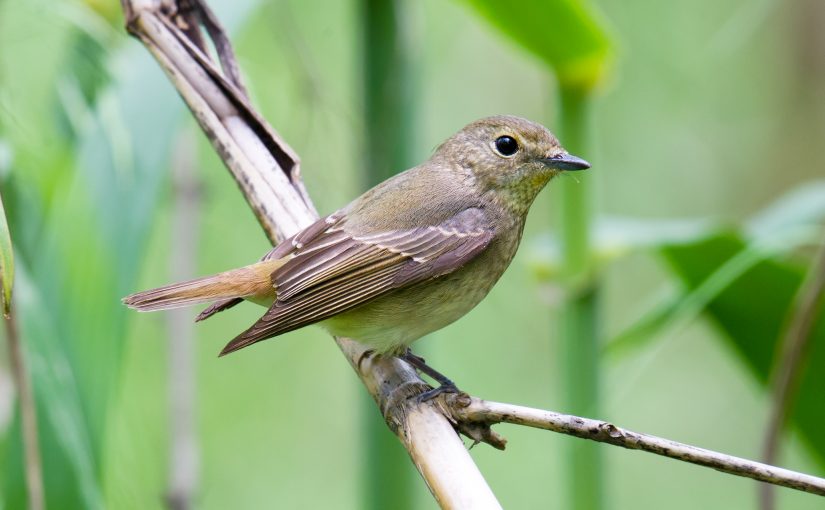by Craig Brelsford
Founder, shanghaibirding.com
Does Green-backed Flycatcher Ficedula elisae migrate through Shanghai? Records exist of the species, but in my opinion they are mainly misidentifications of female Narcissus Flycatcher F. narcissina narcissina (above). In this post, I am going to unearth the roots of my skepticism about F. elisae in Shanghai and describe the differences between female F. elisae and female F. n. narcissina.
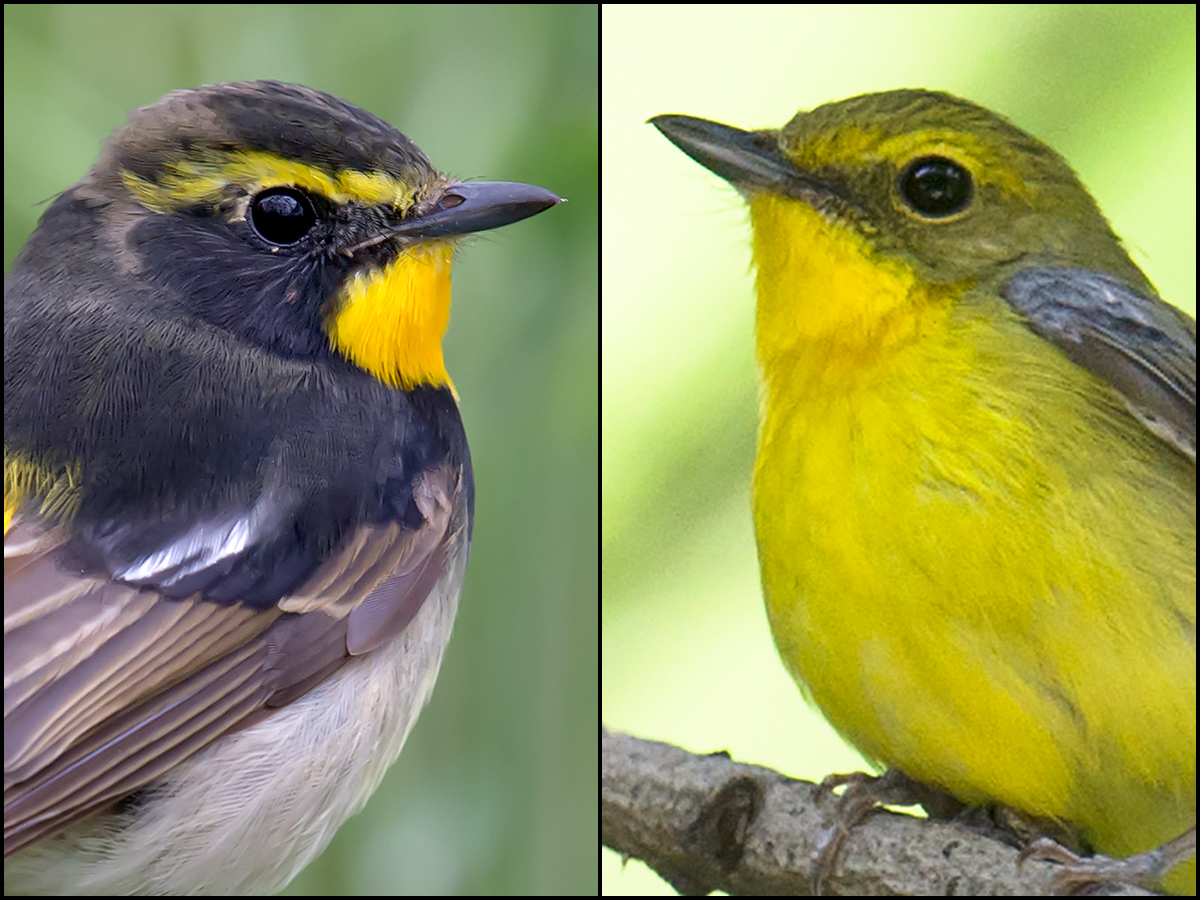
Each spring and autumn, birders in Earth’s Greatest City claim records of elisae. Invariably, the bird in question is a female, not the very distinctive adult male. Here our first red flag pops up: How likely is it that elisae is the one species of passerine whose records in Shanghai never involve adult males?
For the sake of argument, let us admit the possibility of an all-female migration of elisae through Shanghai. Fine, I retort; then show me photos of these purported elisae. The photos are duly supplied, and again and again, as has been the case throughout my more than 10 years in Shanghai, the supposed F. elisae is revealed on closer scrutiny to be female F. n. narcissina.
Indeed, I have seen better documentation in Shanghai of Ryukyu Flycatcher F. (narcissina) owstoni than of F. elisae; in April 2016 at Pudong’s Binjiang Forest Park, Shanghai birder Zhang Xiaolei got a very interesting picture of a possible adult-male owstoni.
Mistakes of the sort many Shanghai birders are making contribute to a distorted picture of the presence on the central Chinese coast of a little-known species. What’s more, the mistakes are avoidable. Separation of female F. elisae and F. n. narcissina is usually straightforward.
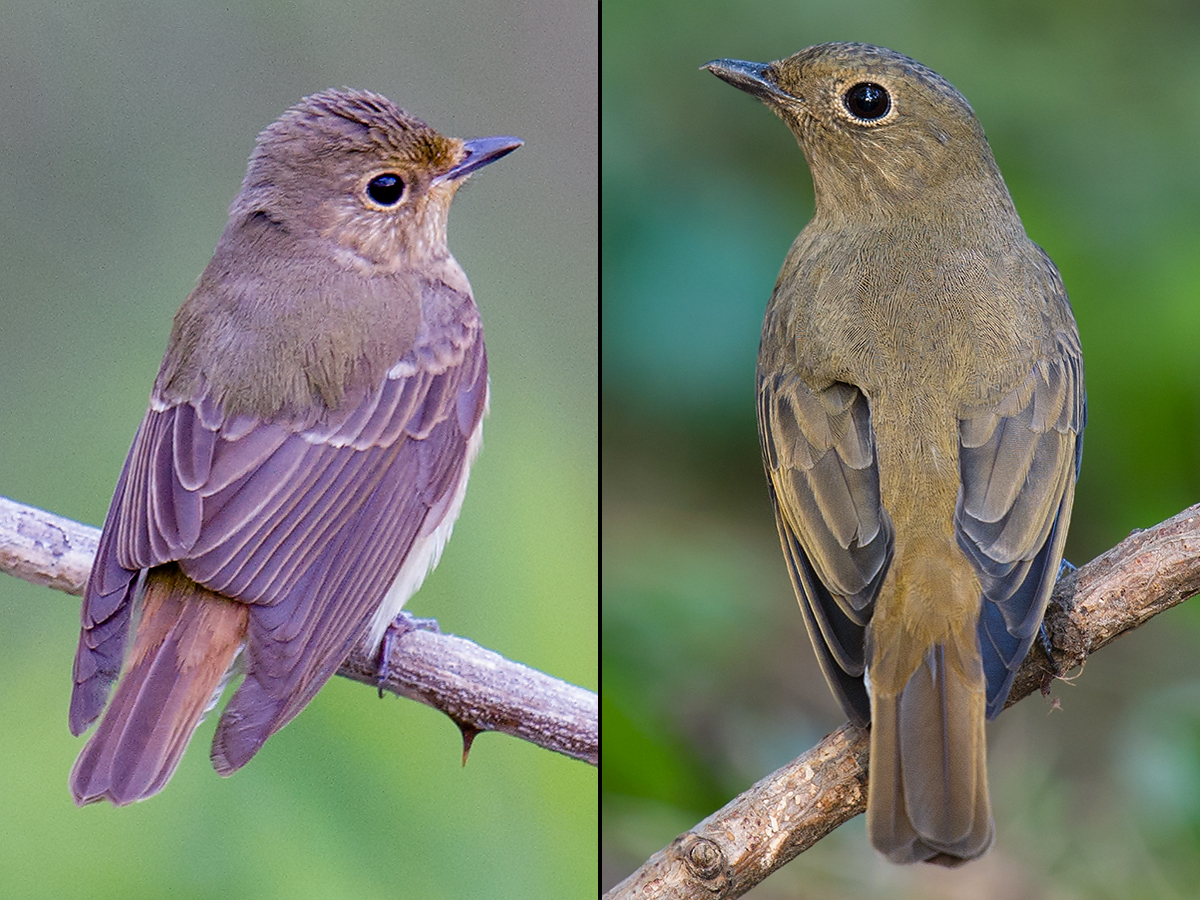
Female F. elisae has greenish upperparts with a yellowish or olive tint. Female F. n. narcissina is greenish with a brownish tint, like female Blue-and-white Flycatcher Cyanoptila cyanomelana (above). On their underparts, female F. elisae is “dull yellow or yellowish-buff,” while F. n. narcissina is mainly off-white, with brownish-white flanks and a hint of yellow on the throat and belly (Brazil 2009, 436).
We can say, therefore, that unlike Pale-legged Leaf Warbler and Sakhalin Leaf Warbler, female F. elisae and F. n. narcissina are distinguishable by plumage. A good look or good photo will likely lead to an accurate ID.
Accurate records in Shanghai, one of the most thoroughly birded areas on the Chinese coast, will lead to better understandings of both F. elisae and F. n. narcissina. Already, the growing body of knowledge about these East Asian breeding endemics has led to the separation of F. elisae and F. n. narcissina into separate species. Previously, elisae had been treated as a subspecies of Narcissus Flycatcher.
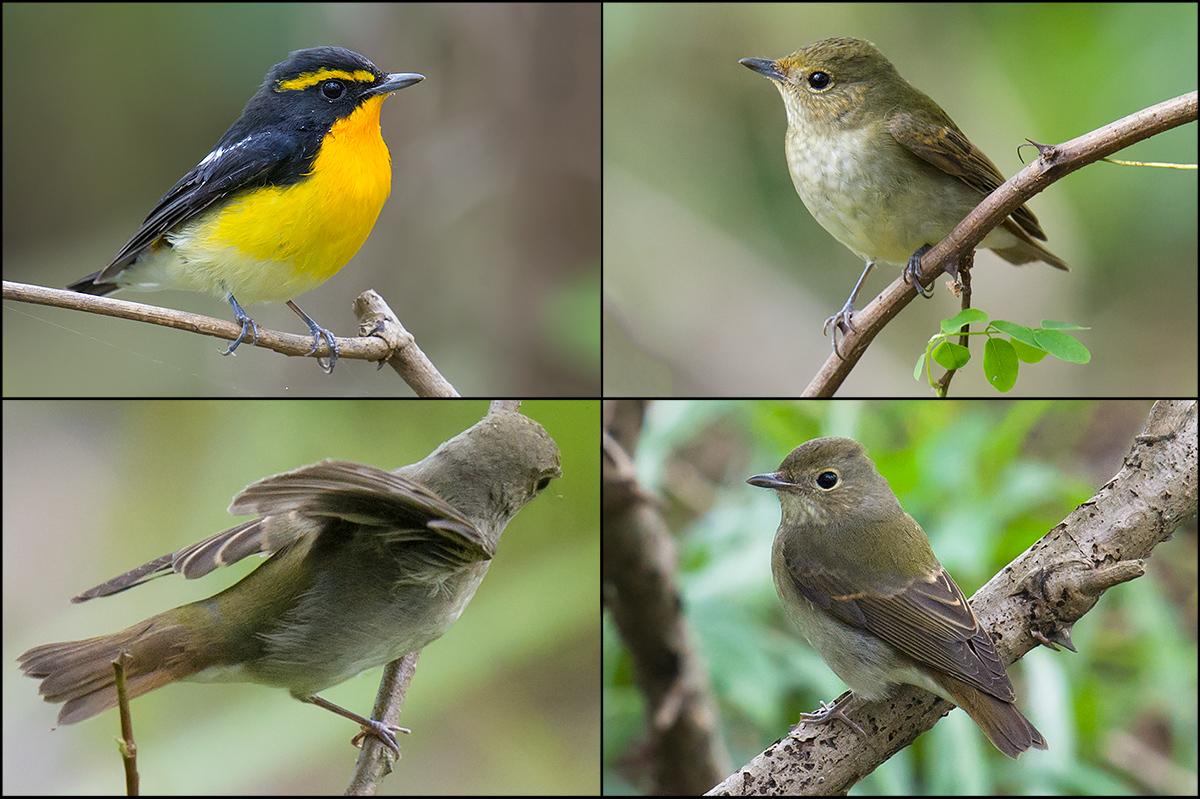
We know as well that the summer and winter ranges of the sister species are disjunct, with F. elisae breeding in a very compact range in Hebei (Wulingshan), Beijing, and Shanxi and wintering in southern Thailand and Peninsular Malaysia. The breeding range of F. n. narcissina includes the main islands of Japan as well as the Kuril Islands, Sakhalin, and the coastal Russian Far East. The species winters in Hainan, the Philippines, and Borneo and passes through Shanghai each spring from about 15 April to 15 May.
Unlike other passage-migrant flycatchers in Shanghai, F. n. narcissina is much less common in autumn than in spring. That is a mystery, one of many surrounding the migration of the Narcissus Flycatcher group.
In light of the information deficit, it behooves us Shanghai birders to strive for accurate records (or non-records) of elisae in our region. Let us practice self-discipline, hone our skills, and give outside observers the clearest possible picture of bird migration in Shanghai.
BIBLIOGRAPHY
Brazil, Mark. 2009. Birds of East Asia. Princeton, New Jersey: Princeton University Press. Entries for Narcissus Flycatcher and Chinese Flycatcher (Ficedula elisae), p. 436.
Featured image: Adult female Narcissus Flycatcher Ficedula narcissina narcissina, Jiangsu, May. (Craig Brelsford)

